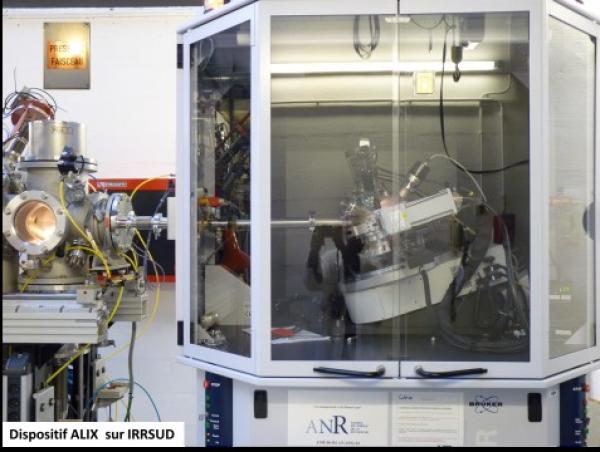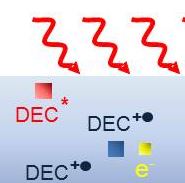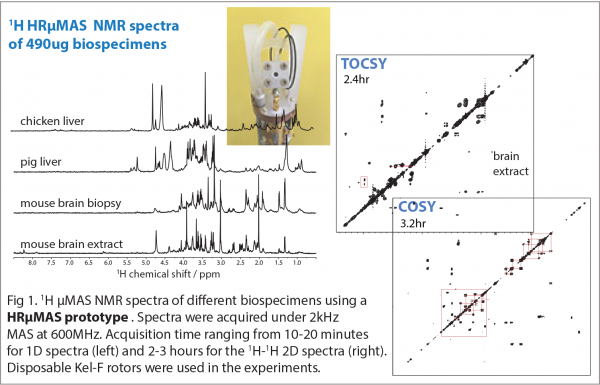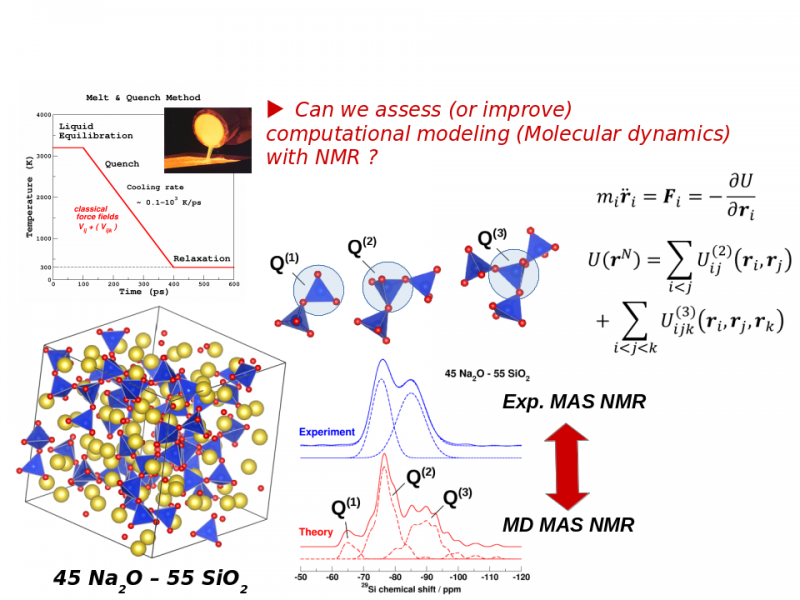Pages scientifiques 2017
|
Fidèle à sa mission d’accueil des recherches interdisciplinaires, le CIMAP (Centre de recherche sur les Ions, les MAtériaux et la Photonique) accueille des expériences d’origines diverses allant de la physique du solide à la radiobiologie, distribuées sur 3 lignes de faisceau permettant de couvrir une grande gamme d’énergie : IRRSUD (~1MeV/A, sortie C0), D1/SME (~10MeV/A, sortie CSS1) et D1/HE (sortie CSS2). Ainsi pour 2017, 45 expériences sont programmées (soit environ 1200 heures de faisceau) impliquant une centaine d’expérimentateurs venus du monde entier. Ce nombre est trop important pour qu’elles soient toutes décrites ici, on peut cependant très schématiquement les regrouper en grandes familles que sont la physique du solide et ses applications, la chimie sous rayonnement et ses applications, l’astrophysique, la physique atomique et la radiobiologie. |
Nanoparticle size and size distribution play an important role in nanotechnology, because the intended effects depend on the size of the particles in the nanomaterial. In the regulatory context, the definition of a nanomaterial is based on the number size distribution of the particles. The EC recommendation for the definition of a nanomaterial gives “50 % or more of the particles in the number size distribution, one or more external dimensions is in the size range 1 nm – 100 nm”.
SAXS (“Small Angle X-Rays Scattering”) allowed a precise structural characterization of nanoparticles on a large number of objects by performing in-situ and non-destructive measurements (shape, size, size distribution, specific surface). Recent publications, Europeans projects (EMPIR Innanopart) and works on intercomparison measurements showed that SAXS and microscopy techniques gives very comparable results.
1. HR-MAS of micro-scale specimens
1H HRMAS (High-Resolution Magic-Angle Spinning) NMR spectroscopy has found success in the study of metabolome in heterogeneous biospecimens, such as cells, tissues and orgamis, owing to its sample non-destructive nature and simplicity data aquisition. However, NMR in general is an insensitive spectroscopic technique relying on large sample quantity, typically 10-20 mg per spectral data; and it has limited the metabolic invertigations in biology and in medicine. For this reason, there is presently a need to develop new NMR methodologies that are capable for analyzing small-scale specimens. One approach is the use of a micro-size detection under MAS condition, but unlike the standard uMAS commerical probe, it must offers high detection sensitivity without compromising the spectral resolution (i.e., <0.002ppm). Here, we are developing a HR-MAS methodology capable of offering excellent spectral quality in sensivity and resolutoin for metabolic applications.
References:
'Evaluation of a high-resolution micro-size magic angle spinning (HRuMAS) probe for NMR-based metabolic studies of nanometer samples'
N. T. Duong, Y. Endo, T. Nemoto, H. Kato, A-K Bouzier-Sore, Y. Nishiyama, A. Wong, Anal. Methods 8 (2016) 6815-6820.
'High-resolution NMR-based metabolic detection of microgram biopsies using a 1 mm HRuMAS probe'
Y. Nishiyama, Y. Endo, T. Nemoto, A-K Bouzier-Sore, A. Wong. Analyst 140 (2015) 8097-8100.
Financial Supports:
- ANR-PRC (2016-2019) on HRuMAS.
- ANR-JCJC (2012-2015) : Développement et exploration de nouveaux micro-détecteurs RMN tournants pour des analyses métabolomiques de biopsies de petite masse – HRMACS
















